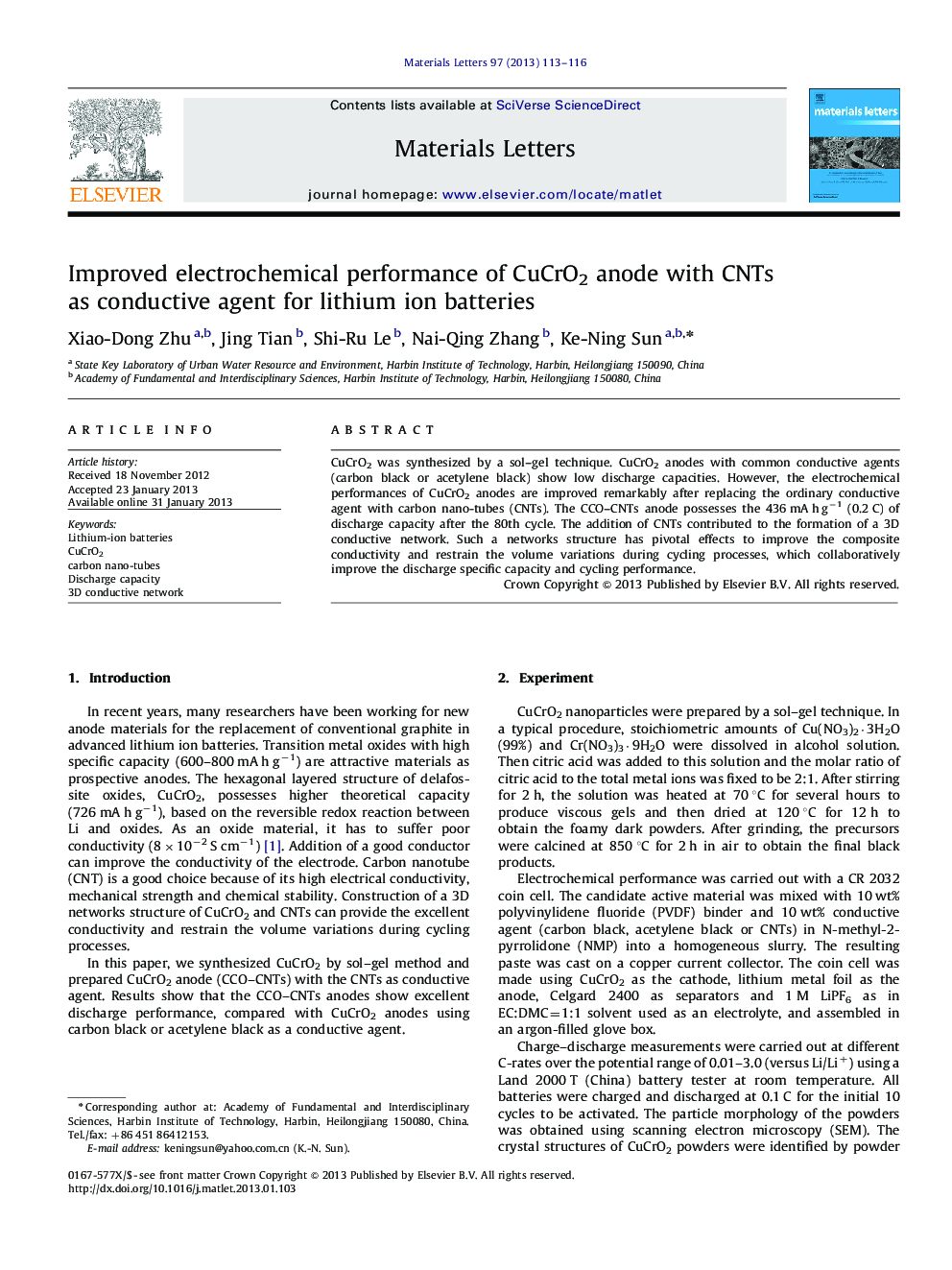| Article ID | Journal | Published Year | Pages | File Type |
|---|---|---|---|---|
| 1645872 | Materials Letters | 2013 | 4 Pages |
CuCrO2 was synthesized by a sol–gel technique. CuCrO2 anodes with common conductive agents (carbon black or acetylene black) show low discharge capacities. However, the electrochemical performances of CuCrO2 anodes are improved remarkably after replacing the ordinary conductive agent with carbon nano-tubes (CNTs). The CCO–CNTs anode possesses the 436 mA h g−1 (0.2 C) of discharge capacity after the 80th cycle. The addition of CNTs contributed to the formation of a 3D conductive network. Such a networks structure has pivotal effects to improve the composite conductivity and restrain the volume variations during cycling processes, which collaboratively improve the discharge specific capacity and cycling performance.
► A 3D network provides good electrical conductivity and restrains volume variations. ► Discharge capacity of CCO–CNTs reaches 436 mA h g−1 (0.2 C) after the 80th cycle. ► CuCrO2 is a promising anode for lithium ion batteries.
